04 Apr Whiteboards or Math Notebooks? Which is Best for Mathematics Instruction?
Which should I use? When? Why? Let’s dive into some of my thoughts on the matter.
Whiteboards:
A place to try out and play with ideas.
Rough Draft vs. Final Draft Thinking
Whiteboards allow for rough draft thinking. There is something very permanent about paper and pencil. You might think, “But they have erasers!” Yes, they have erasers, but in mathematics, I want to see the journey, not just the destination. Once something is erased, the journey has been deleted with it and I am only seeing the final thinking.
I find that as students do original thinking and learning on whiteboards, they will try multiple methods. They will persevere, try something, change their minds, and try again. In workbooks and in notebooks it is often, “once and done.” Even if they change their mind, students often won’t go back and edit their work. It is ‘finished,’ and that’s exactly where they want to leave it. Are there exceptions? YES. Many of your perfectionists will erase and erase and erase until it is perfect. But I find objection to that too. I want to see everything they tried. I want ‘in’ on their thought process. Checking for right answers is only part of the process for me. I care way more about how and why they got there. What if they just copied from a neighbor?
If you are in love with your notebooks, then I suggest using a PEN. I love the pen. I have strict rules around the use of a pen, but I like that they can’t erase because it allows me to see the damage I will need to work on deleting from their math memory. This damage is so apparent when I attempt to question a student on his/her work, and he/she instantly starts to erase the work. There is SHAME there. For whatever reason, they view mathematics as final draft thinking instead of rough draft thinking. If you are questioning them, then it must be wrong, and wrong isn’t ok in math class. This is the type of harmful thinking I am trying to undo. Wrong is A HUGE part of math class. When questioning students, I want to know what they were thinking from a place of wanting to help, but many students have only ever been interviewed about his/her work when it was wrong and were then asked to fix it. As a teacher, I try to stay in a curious mode. I’m always very curious about student work. This keeps me from my true judgment mode. Do you struggle like I do when you see a wrong answer? Do you find yourself instantly correcting students, circling errors, pointing out the errors even without explanation, or maybe also taking their markers and changing it FOR them? I’m so guilty of all of these. Instead, try this:
- Use pens. Train students to put a single line through their work. NO scratching out. There is no shame with their original thinking. It is important to me and I value it. It is so exciting to see the learning that has occurred through this idea/topic.
- If on whiteboards, draw lines or label work. I have students draw a line below their original idea (if they decide to change their minds) and write their new idea below. This allows for some incredible conferences and conversations around why they changed their minds. Otherwise, they may have erased some great thinking, saw a neighbor with what they thought was ‘right,’ erased their work and copied their neighbors. Yikes! That’s not learning. If I can see what they originally did, then if they did copy a neighbor’s, I want them to own it. And/or, I ask students to label their work with a #1, #2, etc. This tells their classmates and me what they thought first, second, etc. And shows everyone that making mistakes is normal.
- Stay curious. Try these sentence stems: “Tell me about your work.” “Oh, this looks interesting, tell me about it.” “Wow, there is so much thinking here, tell me more.”
“I saw Edgar’s board, and he had this answer, so I changed my mind.”
I WANT STUDENTS TO RELY ON THEIR COMMUNITY. So, first, I need to normalize using their neighbors as resources, which means I need to STOP shaming students for ‘copying.’ Have you ever sat in a professional atmosphere where you were asked to do something independently, and you lean over to your neighbor (obviously, or subtly) to see if you get what to do or to get clarification? I can’t tell you how many times I’ve asked teachers to do mathematics in a PD and how many times I see wandering eyes, conversation, etc. We all want affirmation. We all want to know we have it or are on the right track. If I can at least get the student to try at an answer, then we can work on discussing why/how Edgar got his answer and use it to fuel the ‘copier’s’ thinking. My favorite line during inquiry instruction is, “If you don’t know, try something. If you aren’t sure what to try, look around. Take your neighbor’s idea but be sure to ask them what they are thinking as you will be asked to explain it.” We perpetuate ‘cheating’ when we make it shameful to ‘not know,’ ‘do your own work, ‘ etc. Yes, I want them to do their own work, but I need to keep them engaged in the learning, interested in building learning, etc. Once we’ve done this, then we can provide some assessment on what individuals know. Until then, we are building understanding together. Whiteboards make this much more accessible than notebooks. Whiteboards also make it much easier to share learning with a group or the class. Work is typically larger and more easily shared.
Math Notebooks:
A place to synthesize and cement learning.
“I have students copy objectives, vocabulary, etc. into math notebooks.”
On this idea, I vote no. Or at least I vote “no” to how I see this done most frequently. I typically see this done at the beginning of a lesson before any learning, exploring or investigating has been done. I also tend to see a teacher’s definition in very ‘teacherish’ formal language, and students are asked to just copy.
Copying from the teacher’s board to a notebook requires significant working memory. Students have to hold a large amount of information from reading to transferring, especially struggling readers. Have you ever noticed how ‘slow’ some students are with copying into notebooks? My guess is these are the same students who are struggling in reading. What research finds, (specifically, literacy research on students with learning difficulties), is those students aren’t learning and retaining full words as they copy. Instead, they are holding partial words. For example, if the word was fractions. They don’t read the full word as fractions and then copy the full word fractions. They see FRA, and copy FRA. Then they have to look back up and track where they left off for the next piece of the word. You probably do the very same thing with unknown vocabulary/spellings and or with very verbose/complex sentences. Not only are many students terribly inaccurate in transferring the learning, but the task is very taxing on their working memories (Read: LITTLE TO NO memory LEFT TO LEARN MATHEMATICS), and it takes FOREVER. It is copied, but that’s about it. It’s probably wrong. There was little to no comprehension in transferring it, and you just wasted precious instructional time.
How about an alternative?
Make photocopies of things you really want them to have correct. Things like charts, tables, etc. are more easily photocopied and pasted/stapled. Students shouldn’t be copying these anyway. It’s missing the point. You’re making the struggle around copying, instead of the battle being about learning the information. Consider photocopying math models, graphic organizers, Frayer models, etc. for any student who struggles with processing, vision, spatial reasoning, or working memory. Just creating these visual tools is using up so much of their cognitive load. We need to lessen the cognitive burden on tasks that aren’t a part of the real learning objective of the day. In general, copying isn’t a part of the learning objective and should therefore not be taking up precious working memory.
Can math notebooks be used to synthesize the learning, record final draft thinking around methods, processes, etc.?
Yes.
Once students have made meaning of new vocabulary, new methods, etc., it is a perfect time to cement this learning. I’d suggest the guidelines of: think it, say it, write it.
Use student words. Whatever needs to be written should be rehearsed many times during math talk with partners. What is repeated is what is written. If they think it, they should say it. If they say it, they should write it. Skipping these steps skips deep learning. Telling students word for word what to write will make their sample correct, but it doesn’t involve students in understanding or in making connections.
“What if they write it incorrectly and now their examples are wrong?”
Good point. Use this as an opportunity to assess learning. Collect notebooks on these days and ‘check in’ as you would with an exit ticket or an exit task. This is a great time for students to do gallery walks, read each other’s work, modify their own, etc.
“I want students to be resourceful and use their notebook as a tool.”
Me too. I’m suggesting it comes at the end or as we make meaning, not the beginning of the learning. I’d also recommend that we are not using the whiteboard as a real tool. If you have whiteboards that come with your curriculum or a teaching store such as Lakeshore, your whiteboards have built-in TOOLS. For example, the Math Expressions boards are a huge part of Dr. Fuson’s research. On them, each grade level has tools to help them think through mathematics. They are large, awkward, and are of terrible quality, BUT they provide meaningful tools for students. I was recently in a 3rd-grade classroom in which the boards were not the ‘norm.’ In the middle of a problem-solving lesson on multiplication, students of whom I was warned, ‘didn’t know their facts’ started using the number path alongside the board to figure out the solution. Many students didn’t need this tool, but the ones who did, REALLY did. Taking away these tools or only providing them when you ‘think’ students might need them is creating an experience and an access gap. We are limiting student’s access to various problems or objectives because we are taking away their opportunity to experience a tool that would scaffold this learning.
I am always surprised at how students will use these tools from grade 1 to grade 5. Students are looking for ways to understand, express thinking, etc. As teachers, we are often over thinking scaffolds!! The whiteboard is a built-in scaffold and an extension.
I’ve often asked students who are ‘finished’ to figure out how to use the tools on the whiteboard to also solve the problem. These visual supports are critical for all learners.
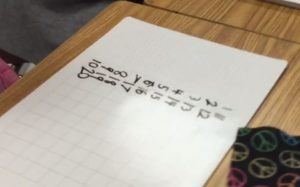
Using the inch grid to organize numbers into groups of ten. The visual is helpful for spatial reasoning and for grouping with tens.

This child was representing 20 with the front side of his math board. He chose to use the math mountain and represent the quantity. Because of the large space, he then began to show 20 another way. The board allowed for multiple representations.
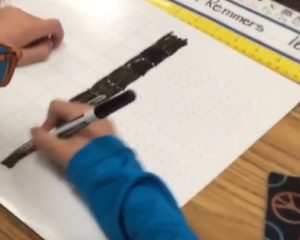
When asked to represent 20, this child represented with quantities by coloring in 20 individual squares. He used the tools on the back of the board.

Look closely at the edge of the board. This was a 3rd grader who was attempting a division problem. Her image is an equal shares model, but she struggled to know the basic fact to help her from here. The model, however, proved to her that she should be counting by sixes, so she used the side of her board that has a number path, to mark every six boxes to help her with her multiples. What a great scaffold and visual for a student who would have otherwise been stuck or worse, quit because she didn’t just ‘know’ the fact.
“But they can’t have them on the test.”
Oh my teacher friend, to you I say, “Of course not!” A scaffold is not a permanent structure. It is something that is intended to be released. It is essential we teach kids how to make their own list of multiples. As they are learning, investigating, etc. we are giving them access to the material through a tool. The more they use the tool, the more they can imitate the tool when it isn’t there.
Don’t limit access to a visual tool because they can’t have them on a test. You know this. I know you are already thinking of ways to make them more accessible to students.
Do you feel empowered and inspired to try some new techniques? Go be GREAT.
If you’ve read this far, then you are one of my stud-muffin teacher friends. I know you are already doing so many of these strategies. I want to hear what else you are doing to make these tools friendly and effective. I also want to hear what new approach you try that I’ve listed above. Let’s keep the conversation going below in the comments, on our FB Group, or on twitter.
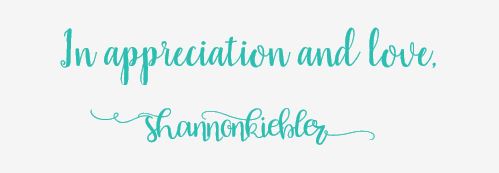
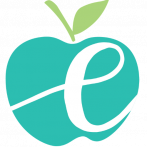

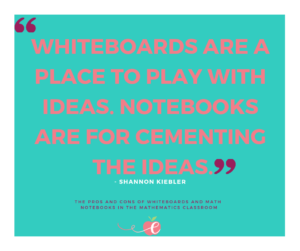
Sorry, the comment form is closed at this time.